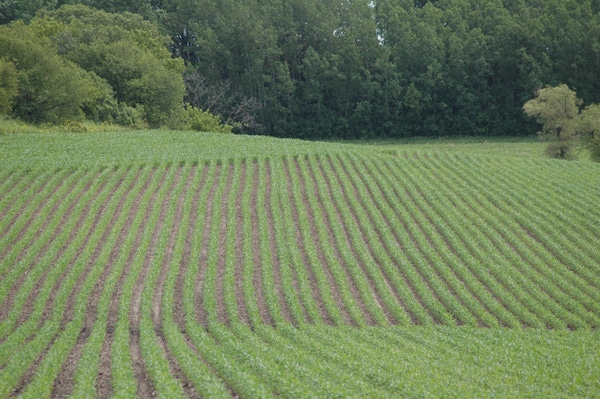June 11, 2013

The yellow leaves on corn plants means one thing: Nitrogen fertilizer applied last fall or early this spring is gone. It washed deep into the soil, beyond reach of the young roots. That means most fields will need additional nitrogen to reach full yield potential, says Peter Scharf, University of Missouri Extension soil scientist.
Nitrogen loss is likely heaviest in areas that received more than 16 in. of rain since April 1. That includes all of northeastern Missouri, plus western Illinois and eastern Iowa.
“Anhydrous ammonia applied last fall is most at risk,” Scharf says. The anhydrous is a gas, but dry or liquid nitrogen applied this spring, pre-plant, also leached down into the soil.
Farmers need to think about how they can apply nitrogen into the growing cornfields, Scharf says. Fertilizer application equipment must be driven over the field between growing corn rows. While the corn is still short, tractor-powered equipment can be used to sidedress nitrogen into the soil near the rows.
“Equipment may become a challenge,” he adds.
As corn grows taller, high-clearance equipment with spinners can be used to broadcast dry fertilizer over the top of the field. That equipment may be hard to find. Increasingly, farm service companies are equipped to apply fertilizer over growing corn.
Some growers are considering spraying liquid nitrogen over the top of corn up to 16 in. tall. “We tried a full rate of nitrogen on some seedling corn this year and it looks fine,” Scharf says. “On bigger corn, a foot tall, we burned it pretty bad, but it’s growing back. That won’t hurt yield much.
“That’s my last choice for how to apply extra N, but if you can get it on before knee high, it’s better than doing nothing,” he says.
Continued rainfall creates another problem. Wet soils delay getting equipment back into the corn fields. Scharf urges farmers to not abandon the idea of getting additional nitrogen applied, no matter how late.
“We’ve seen no loss on yield when nitrogen is applied to corn up to 4 ft. tall,” he says. “We've seen yield response right up until almost tasseling time. If your livelihood depends on growing corn, it will pay to apply the N.”
Deep-core soil samples can be taken for nitrogen tests. “That is hard work,” Scharf adds. “If the corn is yellow and not growing, it needs nitrogen. Don’t wait for a soil test.”
However, Scharf urges farmers to make a plan for applying the nitrogen, soon. Arrangements should be made now to assure a supply of fertilizer to apply.
Like what you're reading? Subscribe to CSD Extra and get the latest news right to your inbox!
“Fertilizer dealers plan to have their bins and tanks empty by the end of planting season,” Scharf says. “They don’t plan to carry fertilizer over to the next season. But if they know they can sell it to you, I’m sure they will get it for you. Just arrange to have it when you need it.”
Scharf talked to soil consultants who did deep-core sampling. “They are not finding normal nitrogen levels in the top foot of soil. Most has moved down to the second foot.”
Corn plants need nitrogen to grow roots that will go deep into the soil. Much of the corn across Missouri was planted five to six weeks later than farmers wanted to plant. “When the weather opened a little, they planted corn. They didn’t stop to put on fertilizer,” he says.
“Actually, people who put nitrogen on after they planted are probably in the best shape,” he adds. “Farmers in the Bootheel count on side-dressing every year. They always get an extra 10 in. of rain. They know what to do.”
Scharf and his colleague John Lory maintain the website Nitrogen Watch 2013 to show where nitrogen losses occur. It is based on cumulative rainfall reports from across the Corn Belt. The reports are divided into well-drained and poorly drained soils. The fertilizer loss will extend later in poorly drained areas.
“There’s going to be a lot of yellow corn,” Scharf adds.
You might also like:
You May Also Like




